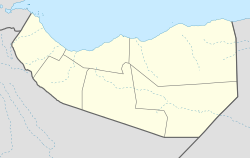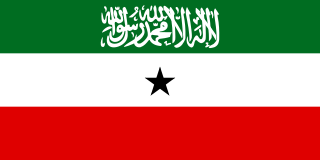
Somaliland, officially the Republic of Somaliland, is an unrecognised country in the Horn of Africa. It is located in the southern coast of the Gulf of Aden and bordered by Djibouti to the northwest, Ethiopia to the south and west, and Somalia to the east. Its claimed territory has an area of 176,120 square kilometres (68,000 sq mi), with approximately 6.2 million people as of 2024. The capital and largest city is Hargeisa.
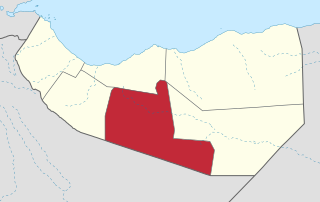
Togdheer is an administrative region (gobol) in central Somaliland. Togdheer is bordered by Maroodi Jeex to the west, Saaxil to the north, Sanaag to the northeast, Sool to the east and Ethiopia to the south. Its capital is Burao.

Marodi Jeh is an administrative region (gobol) in western Somaliland. It is the most populous region of the country. It is bordered by Awdal to the west, Sahil to the north, Togdheer to the east and Ethiopia to the south. Marodi Jeh was created by splitting the previously existing region (gobolka). In 2007 the region of Woqooyi Galbeed was renamed to Maroodi Jeex.

Burao, also spelt Bur'o or Bur'ao, is the capital of the Togdheer region and the second largest city in Somaliland. Burao was the site of the declaration of an independent Somaliland on 18 May 1991.

The Isaaq is a major Somali clan. It is one of the largest Somali clan families in the Horn of Africa, with a large and densely populated traditional territory.

Ahmed Mohamed Mohamoud "Silanyo" is a Somaliland politician who was President of Somaliland from 2010 to 2017. He is a long-time member of the government, having served as Minister of Commerce of the Somali Republic, and among other Cabinet positions. During the 1980s, he also served as the Chairman of the Somali National Movement.
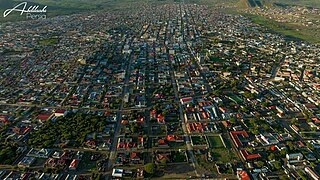
Borama is the largest city of the northwestern Awdal region of Somaliland. The commercial seat of the province, it is situated near the border with Ethiopia.
The Togdheer River is a seasonal river in the Togdheer region of northeastern Somaliland. The region is named after the river. The river's name comes from "Tog" and "dheer".

Borama District is a district of the Awdal region in Somaliland.
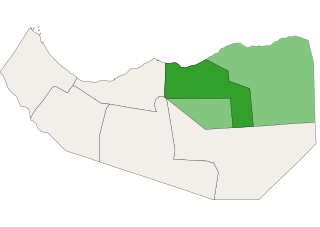
El Afweyn District is a district in the Sanaag region of Somaliland. Its capital lies at El Afweyn.

Taleh District is a district in the eastern Sool region of Somaliland. Its capital lies at Taleh, the former headquarters of the Somali Dervish State.
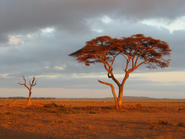
Burao District is a district of the Togdheer region in central Somaliland. Its capital lies at Burao.

Odweyne district or Dadmadhedh region is a district in the central Togdheer region of Somaliland. Its administrative center is Odweyne.

Sheikh District is a district in the Sahil region of Somaliland. Its capital lies at Sheikh. The district was part of Togdheer region until 1998, when the Sheikh District was incorporated into the Sahil region.
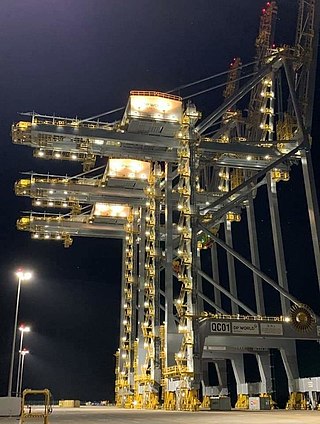
Sahil is an administrative region (gobol) in northern Somaliland with the port city of Berbera as its capital. It was separated from Woqooyi Galbeed and became a province in 1991. In 1998, the Sheikh District of Togdheer was incorporated into Sahil region. The region has a long coastline facing the Gulf of Aden to the north. Sahil borders Awdal to the northwest, Maroodi Jeex to the southwest, Togdheer to the south and Sanaag to the east.

The Isamusa is a prominent Somali clan which is part of the Isaaq family clan. The Isamusa traditionally consists of coastal people, nomadic pastoralist and merchants. This clan are primarily settled in Somaliland, including Maroodi Jeex, Togdheer, Sahil, Awdal, Djibouti, Yemen, as well as Kenya. Isamusa populations are present in southern Somalia such as Mogadishu.
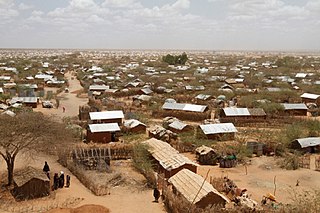
Balidhiig, also known as Balli Dhiig is a town in the Togdheer region of Somaliland, on the border of Somaliland and Ethiopia.

Yirowe, also spelt Yerrowa, Yerowa, Yeroweh or Yerowah is a town in the Burao District, located in the Togdheer region of Somaliland. The town is located 20 km east of Burao, the provincial capital of the Togdheer region.
Cayn or Ayn is an administrative region that Puntland unilaterally declared to be established in the 2000s. However, there is Somaliland between Cayn and Puntland, and they do not directly border each other. Somaliland has legally designated this area as its territory as Buhoodle District. SSC-Khatumo, which declared its secession from Somaliland in 2023, claims the territories of Sanaag, Sool, and Cayn, as its name implies, and effectively controls Buuhoodle.
The Ibran is a major clan of the wider Isaaq clan family. Ibran had two sons, Egale And Yonis. Yonis's son Mohamed have two sons Abdalle, and Essa. Its members form part of the larger Habr Je'lo confederation along with the Muse Sheikh Ishaaq, Sanbuur and Tol Je'lo clans. Politically however, the Ibran are part of the Habr Je'lo.



